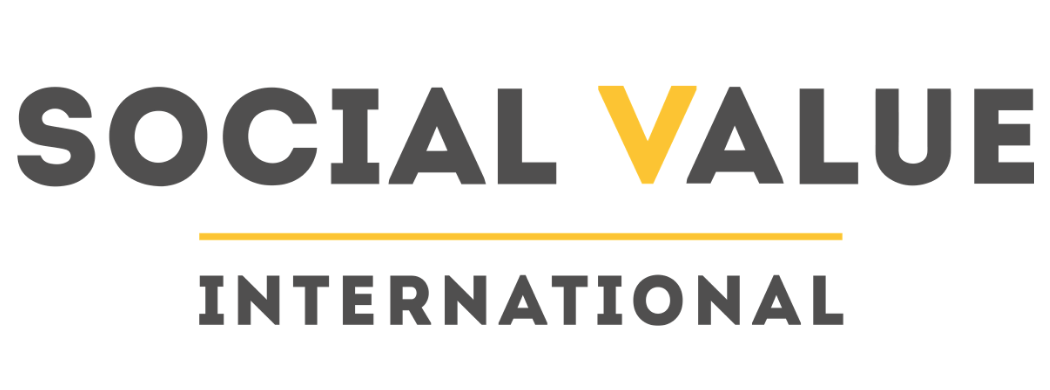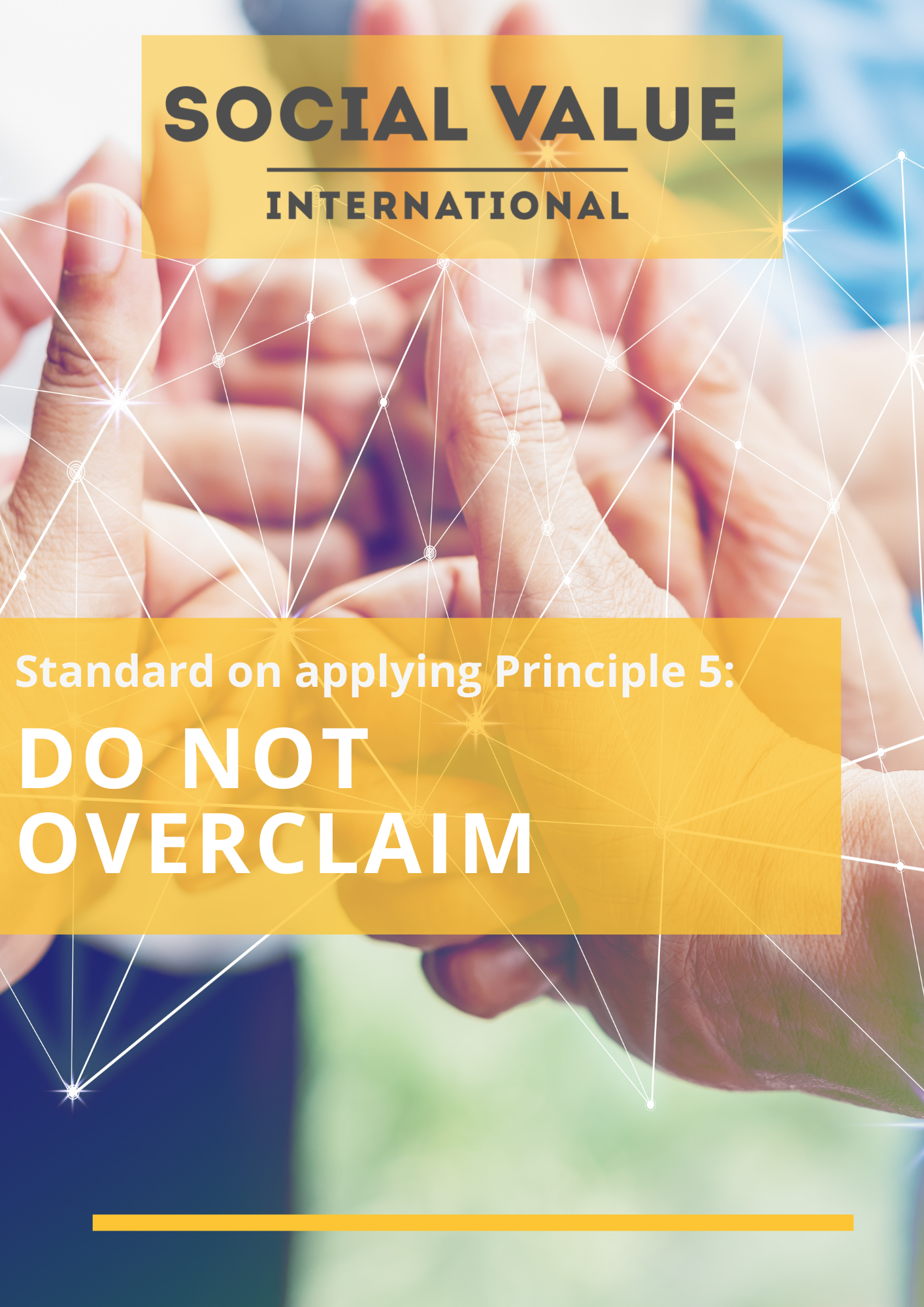
Principle 5: Do not overclaim
This page has the SVI standard for applying this principle and also recommended guidance documents that can help you meet the standard.
Standard on applying Principle 5
Only claim the value that activities are responsible for creating.
Please note, the standard on applying Principle 5: Do not overclaim is due to be published in early 2022. Please see below for further guidance on how to avoid overclaiming.
If you are interested in finding out more about how SVI works with our global community to develop the practice standards for social value and impact management, or would like to learn more about the work of the Methodology Sub-Committee please get in touch.
Useful guidance:
-
Supplementary Guidance for estimating Deadweight and Attribution
The purpose of this Guidance note is to help you decide how to estimate what would have changed
if your services hadn’t been provided and if some of the change was due to the contribution of others. These estimates will reduce the risk of your over claiming that the change was the result of your services. This is necessary in order to comply with one of the principles of SROI, the principle of not over claiming. This guidance expands on the relevant sections of the Guide to SROI, explaining the reason for the principle and providing more guidance on how to estimate deadweight and attribution.
-
Context Matters for Size: Why External Validity Claims and Development Practice Don’t Mix
This paper examines how policymakers and practitioners should interpret the impact evaluation literature when presented with conflicting experimental and non-experimental estimates of the same intervention across varying contexts.
-
Additionality Guide: Fourth Edition 2014
This Guide explains how to assess the additional impact or additionality of local economic growth and housing interventions. Additionality is the extent to which something happens as a result of an intervention that would not have occurred in the absence of the intervention
-
Alternatives to the Conventional Counterfactual: Summary of Session 713 Think Tank
This note provides a summary of the main points raised during the discussion on alternative to conventional counterfactuals. The Think Tank had three objectives: to ask how project or programme outcomes and impacts cam be assessed when it is not possible to construct a statistically matched control group; to consider the real-world challenges of using comparison group designs and; to share experiences on promising approaches for assessing outcomes without a statistical comparison group.
-
Additionality Guide: A standard approach to assessing the additional impact of interventions
This guide explains how to assess the additional impact or additonality of a regeneration, renewal or regional development intervention.
-
Chapter 7: Retreat From Radical Skepticism: Rebalancing Theory, Observational Data and Randomization in Development Economics
-
Measuring Impact by Design
This document is intended to be both an accessible introduction to the topic, as well as a reference for those involved in the design, delivery, procurement or appraisal of impact measurement strategies for Impact Canada projects. Drawing on best practices, Measuring Impact by Design was written to guide its readers to think differently about measuring impact than we have traditionally done within the federal public service.
-
Measuring effectiveness: Roadmap to assessing system-level and SDG investing
In this, the summary report of the Investors’ System-level Impact Measurement project, TIIP provides
investors with a roadmap for measuring the effectiveness of their system-level investing approaches—Measuring Effectiveness: Roadmap to Assessing System-level and SDG Investing. The roadmap helps investors ensure that they are moving beyond generating environmental or social impact through individual market transactions and alignment with broader system-level goals (e.g., the United Nations Sustainable Development Goals), and are also influencing related system-level change.
-
QuIP and other approaches
A wide variety of other approaches to impact evaluation are in use, including qualitative, quantitative, participatory and mixed methods (e.g. see www.betterevaluation.org). The QuIP draws particularly on qualitative approaches, in the sense that it deals primarily with words rather than numbers, derived from open narrative text rather than responses to closed questions. Rather than drawing on its own distinctive body of theory it is also the product of a pragmatic, eclectic and iterative learning-by-doing approach to methodological development that borrows from several other approaches, discussed below.

